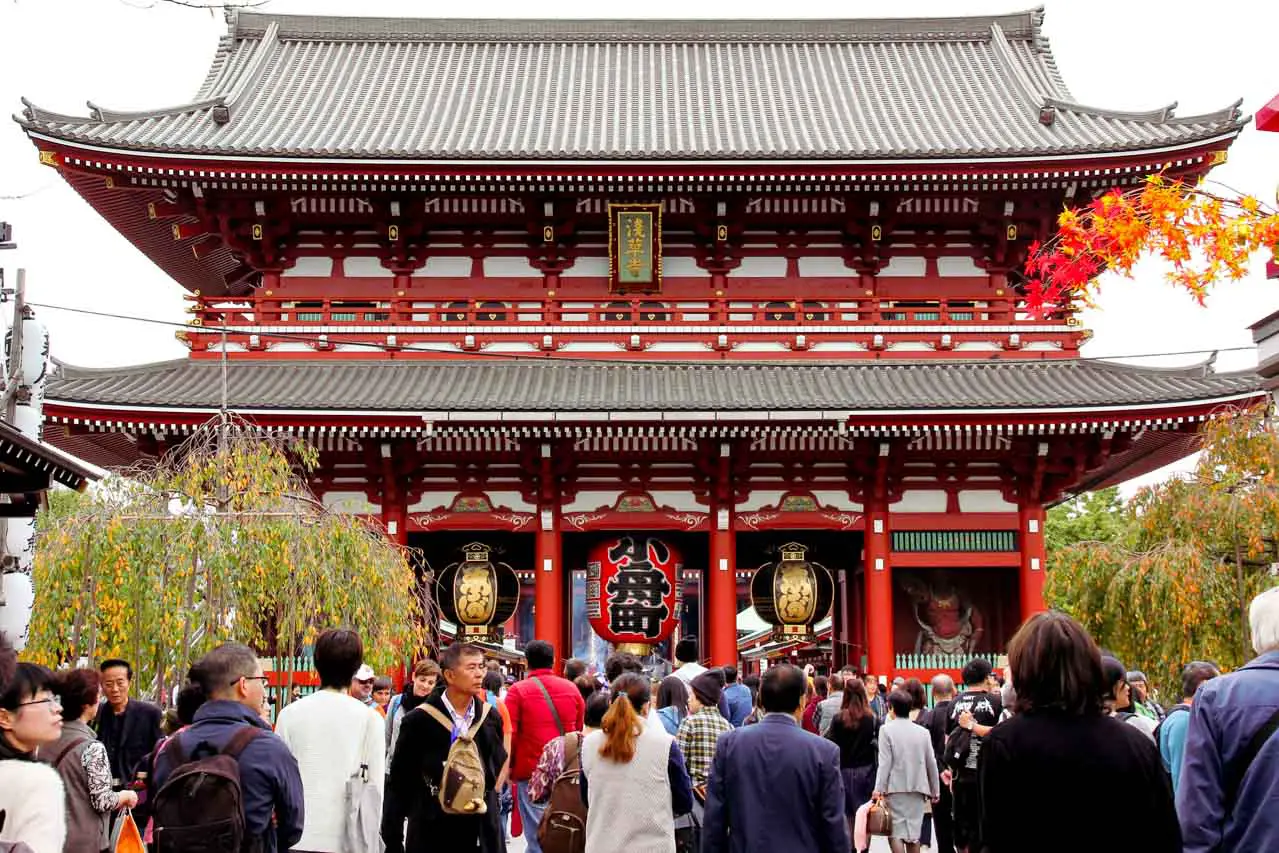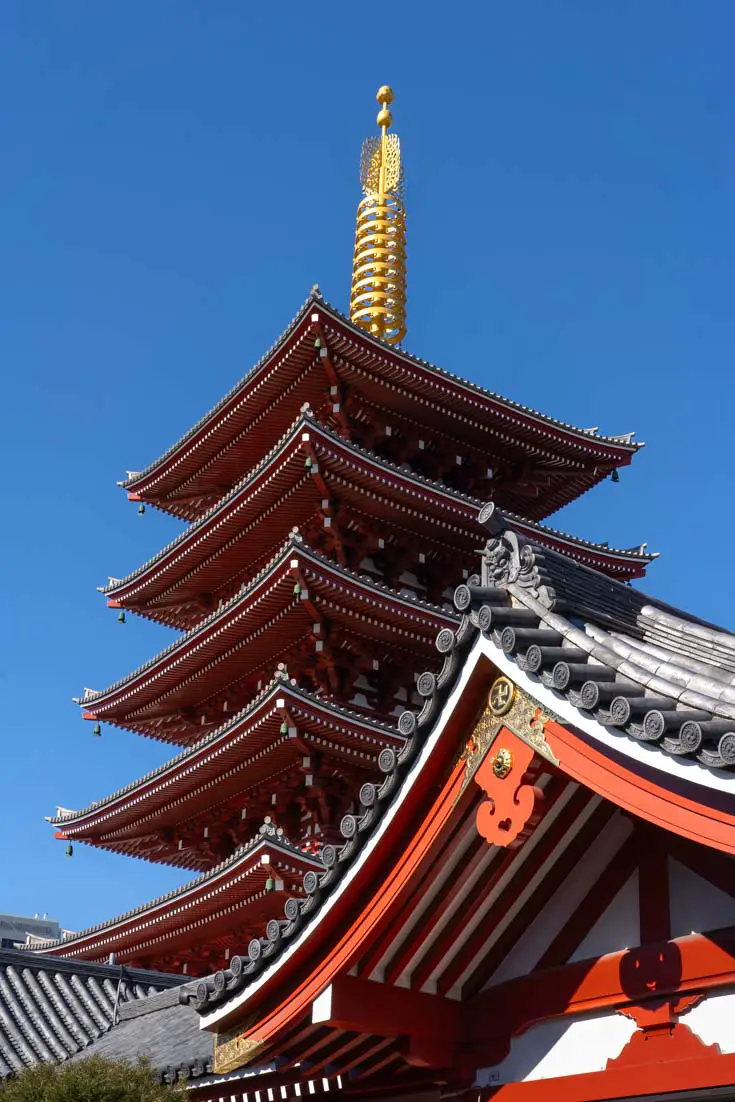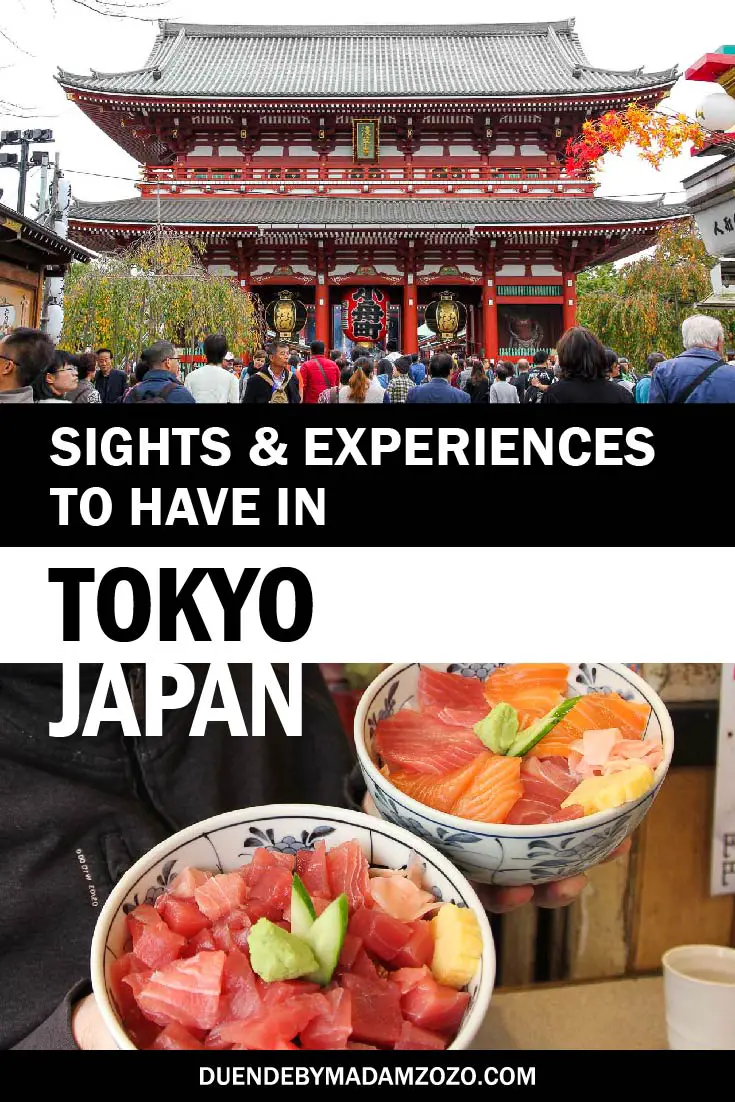Tokyo is a fabulous city to start or continue your East Asia explorations. There’s an abundance of things to do in Tokyo and districts with varying personalities to explore. Whether you want to dive into Japanese history at a Buddhist temple, Shinto shrine or Museum; investigate modern sub-cultures and nightlife; hanami in cherry blossom season or enjoy winter-clear views of Mt Fuji. Here is my guide to where to go in Tokyo.
Table of contents
Why visit Tokyo?
Tokyo is a fantastic city to start exploring East Asia, or dip your toe into international travel generally. As the capital of Japan and one of the most populous cities in the world, the Tokyo metropolitan area is crammed with culture, history and landmarks.
However, unlike similarly sized and populated cities around the world, it is clean, safe, surprisingly quiet and relatively orderly. Even the public bathrooms are shipshape! Usually destinations this clean and neat have that over-sanitised, just-for-the-tourists feel. Not Tokyo. Did you see any of those videos from the 2022 World Cup where Japanese spectators would clean up the stadium around them before they left? Well, that is an authentic reflection of Japanese culture in general and I’m here for it – how about you?!
Add to that, the people in Tokyo are generally friendly and often speak at least a few words of English (more than they might feel comfortable admitting to). Even when communication is more difficult, they are patient and good humoured. It’s common to find signage and maps in English, especially where tourists frequent. Though the metro can be a little tricky, once you’ve travelled it a couple of times, you’ll find it an easy and convenient way to get around. Overall, Tokyo is just a dream!
Have I convinced you? Are you ready to find out what to see in Tokyo?
Shinjuku City
Tokyo gardens and green spaces
I visited various gardens all over Tokyo city, and my pick of the bunch is Shinjuku Gyoen National Garden. This is largely owing to the spectacular Chrysanthemum display that was in full bloom during my autumnal visit. The Chrysanthemum exhibit is one of two big floral events in the Garden’s calendar, the other being cherry blossom season. The garden is divided into a number of themed landscapes and includes a greenhouse blossoming with tropical flora. Wear walking shoes, pack a picnic and be prepared to pay an entrance fee of JPY500 (about USD3.40) per person.
Tokyo tapas
If you’re looking for an izakaya or twenty, Shinjuku has you covered. Izakaya are informal Japanese bars where you can order up affordable snacks and dishes, usually to share, alongside your alcoholic beverages. These buzzy little bars come alive in the evening as the office-hours are winding up. The rabbit-warren of laneways, near Shinjuku Station will take care of all your izakaya needs and Instagram pics in one. Look for Golden Gai and/or Omoide Yokocho on Google Maps.








Ueno
Parks and museums
Another great, green space to visit in Tokyo and one that is free to enter, is Ueno Park. The city’s largest public park has over 1000 cherry trees, making it a great for spring sightseeing. Ueno Park is also home to the National Science Museum, Tokyo National Museum and the National Museum of Western Art.
The Tokyo National Museum in Ueno Park is a must-see for history and art lovers. I spent an entire afternoon in the Museum alone and didn’t make it through the entire collection of swords, samurai armour, kimono, pottery, scrolls and Buddhist artefacts – to name a few. It’s hardly a surprise considering the Museum holds the largest assemblage of Japanese art in the world! If you only visit one museum in Tokyo, make it this one.
Shibuya
Meiji Jingu (Meiji Shrine)
Meiji Jingu won my heart instantly by its towering torii gate leading into a tranquil forest that shelters the shrine from the city hustle. The original Shrine completed in 1920, was destroyed during World War II and promptly reconstructed.
Meiji Jingu is a Shinto shrine dedicated to Emperor Meiji and the Empress Shoken. You’ll find the Emperor’s chrysanthemum motif incorporated into design elements such as doors and lanterns.
Shinto was the religion of Japan prior to Buddhism’s arrival, which places an emphasis on living in harmony with nature. Hence the 100,000-plus trees planted during the Shrine’s construction to surround the complex. Also, note the sacred camphor trees in the Shrine’s courtyard. You’ll find them married by shide and shimenawa.
Scramble Crossing
I’m mentioning it because there seems to be a great fascination with Shibuya’s scramble crossing. However, after visiting it three times several years apart, I’m still left underwhelmed. But Shibuya Crossing has been deemed the “busiest pedestrian intersection in the world” and that’s enough for some.
The so-called Scramble takes place at the junction of 10 lanes of traffic just outside Shibuya Station. Here, all 5 crosswalks “turn green” at once, allowing pedestrians to traverse in all directions simultaneously. The crossing is illuminated by oversized LED screens pumping advertisements at all times of day. Estimates of pedestrian volumes vary, and these days half of them seem to be tourists and fans of movies like The Fast and the Furious: Tokyo Drift.
Tip: Hold onto your hat now, because this is probably the only time or place on this blog I’m ever going to plug Starbucks! The best place to view the Scramble from a publically accessible location that isn’t the crossing itself, is the Starbucks on the second level of the QFRONT building that holds prime viewing position over the intersection (currently closed for renovations until April 2024).
Nightlife
When you’re done investigating the crossing, check out the Shibuya dining and nightlife scene. Whether you’re looking for an authentic Japanese meal or bars and clubs, you won’t find a better spot for a late night out.
Chiyoda City
Imperial Palace
The Imperial Palace and Gardens are an essential sight of Tokyo. You will need to join a guided tour to see the Palace (exterior only). The tour is free and well coordinated, but it takes a big chunk out of the day for a fairly shallow look at the secure part of the Palace grounds. This is generally owing to the lengthy security procedures and briefing beforehand. IMHO, skip the tour and go straight for the Gardens.
The Gardens are also free to enter, with a simple security inspection of any bags. Inside the Gardens you can see ruins of the Edo-era castle, defensive structures, an orchard, formal flower gardens and a lovely alley of plum trees (that blossom in late winter). The complex is surrounded by stone walls and an impressive moat. There are also roughly 2000, sculpted, Japanese black pine trees in the Garden Plaza in front of the Palace.
Tip: Rent a boat on Chidorigafuchi Moat during peak cherry blossom bloom, it will only set you back about JPY800 (about USD6) for half-an-hour.





Asakusa
Sensōji
The Buddhist pagoda that originally stood on this site was constructed in the Edo Period circa 942 AD. Unfortunately, it was destroyed during air raids in WWII. Sensōji has since been rebuilt and stands in a lovely complex with Asakusa Shinto Shrine.
The experience opens with the dramatically proportioned lanterns hanging in the Karminarimon “Thunder Gate.” From the gate, continue down a street lined with vendors peddling all sorts of soulful souvenir goodness and some yummy snacks.
Cultural note: If you buy food, try to eat in or consume your snacks standing outside the establishment you bought it. To eat/drink while walking in Japan is considered rude.
Arriving at the Shrine complex there are a number of buildings to explore, scattered around a well-tended Japanese garden. Though this is a popular tourist sight, you will observe plenty of local activity as well. I stumbled upon some sort of mother-daughter day, with ladies young and old dressed in their traditional finery.
Tip: Visit during the week for fewer crowds and more local activity.
Asahi Beer HQ
Beyond the Sensōji temple complex, step out onto Azuma Bridge over the Sumida River, for a view of the Asahi beer headquarters and Tokyo Skytree. The Asahi buildings are the neighbours, one that look like a glass with the foaming head of a beer and the other with the gold flame on top. There is a bar on the 22nd floor of the taller building.
Harajuku
Shopping in Tokyo
Some like the plastic-fantastic Takeshita Dori, the epitome of every Western person’s impression of Harajuku – thank you, Gwen Stefani. Some will prefer the slick designer wares of the main street. I prefer the back roads of Harajuku, filled with unique boutiques and cafes to explore as they sprawl back into the surrounding residential area.
If you’re starting out before 10am, you can probably get into Bills Omotesando for breakfast without the hour queue. Then with a belly full of fluffy ricotta pancakes, you’ll have the energy to work your way through the streets behind the Plaza.
When your feet get sore, stop in for coffee at Café Luigi, a cafe named after famous Swiss-born industrial designer Luigi Colani. Urban legend recalls that in the mid 1980’s, whilst working in Tokyo, Colani frequented the café originally named Petit Faune. The owner eventually renamed the café in honour of his favourite customer and has since decorated his coffee shop with sketches and images of Colani’s designs.
Yanaka
Edo-era Tokyo
Where to start? This is hands down my favourite part of Tokyo. Maybe it’s because Tokyo is the only part of Japan I am yet to experience, but Yanaka has a special Edo-era charm that I personally prefer to the skyscrapers and shopping districts.
Wander the quaint residential streets dotted with fascinating temples and shrines. Saunter through Yanaka Cemetery where the last shogun (military ruler of Japan) is buried. Seek out the only surviving segment of a 200-plus-year-old, earthern wall that once was part of a wall system spanning hundreds of kilometres. Then stroll through the quaint boutiques and eateries of Yanaka Ginza.
Asakura Choso Museum
Also, make sure you visit the Asakura Choso Museum, former home and studio of Japanese sculptor Asakura Fumio. The home built in 1936 in a blend of western, Art Deco and traditional Japanese architecture that reveals stunning surprises at every turn. Make sure you climb to the rooftop garden for a 360-degree view of the surrounds. Sadly, no photos are allowed in the Museum, so you’ll have to trust me.
Replenish your energy at Ōshimaya, a noodle shop on the second level of the corner building at 3-2-5 Yanaka.








More things to see in Tokyo
Bunkyo City
Nezu Shrine
Nezu Shrine has really gained popularity since my first visit to Tokyo. It’s probably those highly-grammable Tori gates and its perfectly-pruned azalea garden. I won’t lie, it is hugely photogenic, even in winter when there aren’t any blooms. However, I wouldn’t go a huge distance out of your way to visit if you only have a couple of days in Tokyo. If you do have time in your itinerary, Nezu Shrine is less than 20-minutes from the closest end of Ueno Park, and about the same from Yanaka Ginza (both mentioned above).
Nippori
DIYers delight
If you are a sewer, crafter or DIY fashionista, you are going to want to make it to Nippori Fabric Town in the northeast of Tokyo. The “town” is easily reachable on the JR Yamanote line, with a further two-minute walk to where a host of fabric and notions stores are concentrated along a short strip of Nippori Chuo Dori.
Many stores specialise in specific types of textiles or accessories, such as leather or silk. There is a mix of traditional Japanese fabrics and modern fashion and craft materials. You’ll also find second-hand kimono for sale. If you’re the type that could spend hours in Spotlight/ Lincraft/ Jo-Ann/ Hancock Fabrics, then Nippori Fabric Town is a worthwhile stop.
Akihabara
Electric Town
This part of town isn’t my cup of tea, but if you identify as an Otaku—Japanese word for “geek”—who enjoys electronics, gaming, cosplay and manga, then you probably want to visit Akihabara. The neighbourhood got its nickname “Electric Town” post-WWII, when it became a hub a black market for electronic parts. This evolved first into a legitimate hub for retailing household electronics, before further pivoting into a tech-nerds paradise.
Akihabara is also where you’ll find those horrendously-sexist maid cafes, where “even families go” assured our guide when he was trying to convince us these establishments weren’t brothels. Instead, you’ll be waited on, by young girls in highly-sexualised maid outfits calling you “master” or “mistress”. Eeew!
Toyosu
Toyosu Market (the new fish market)
You’ve probably heard of Tokyo’s Tsukiji Fish Market, which used to be a hot spot for tourists. While it still is, the big drawcard which was the wholesale part of the market, relocated to purpose-built structure in Toyosu. While it doesn’t have the feel of the old market, Toyosu better facilitates the hords that turn out to see the coveted, early-morning tuna auctions.
Tsukiji
Tsukiji Fish Market (the old fish market)
Tsukiji Market remains where it always was, with the wholesale spaces mentioned above relocated to better-fitting premises. What is left is retail and eateries. Though it’s mostly frequented by tourists, you might still want to check it out.
Drop me a line in the comments if this “where to go in Tokyo” guide helped you decide where to go in the Japanese capital, I’d love to hear your thoughts. Don’t forget to also check out Even Samurai Grow Flowers for more of that spectacular autumn Chrysanthemum display.
Peace love & inspiring travel,
Madam ZoZo





